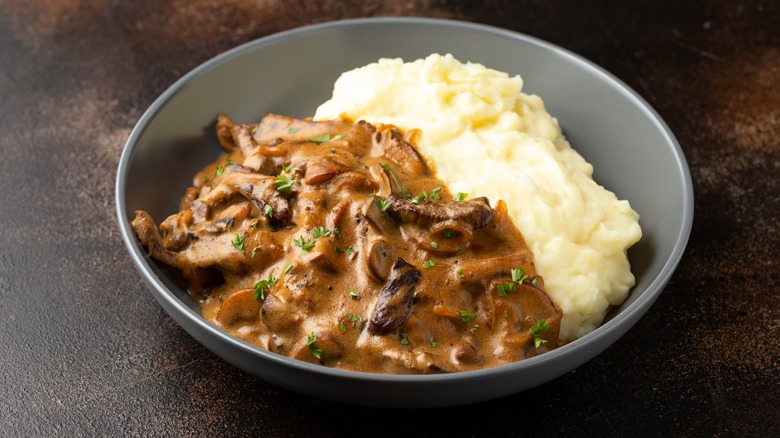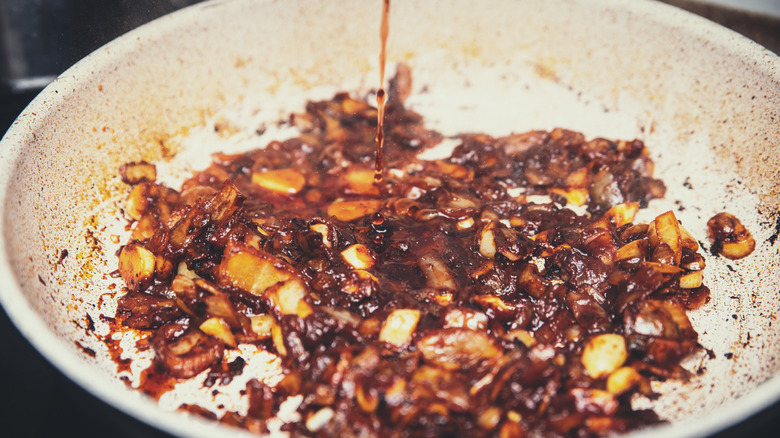A Splash Of Booze Is The Secret To Richer Flavor In Beef Stroganoff
Few dishes evoke the warmth and comfort of a hearty beef stroganoff. Its rich tapestry of flavors weaves together tender beef, earthy mushrooms, luxurious sour cream, and the tang of Dijon and makes for a classic indulgence. Yet, the secret to unlocking the full depth of beef stroganoff's flavor lies in a small but significant addition: alcohol. Specifically, cognac takes center stage in the culinary alchemy, adding complexity without overpowering the dish.
When used to deglaze the fond from the pan, a healthy dose of cognac enlivens the constituent elements of beef stroganoff. The robust, umami-forward beef and stock, the velvety richness of sour cream, the earthiness of mushrooms, and the piquant heat of the Dijon all find harmony in the presence of this fine French brandy. Cognac's distinct notes of dried fruit, oak, and its subtle hint of sweetness create a bridge between the disparate elements, elevating the dish to a new level of sophistication.
As the cognac gently simmers with the ingredients, its high alcohol content begins to evaporate. Contrary to concerns of an overwhelming boozy flavor, what remains is a nuanced tapestry of tastes. The alcohol acts as a solvent, extracting and melding the flavors of the ingredients. The result is a balanced and harmonious dish where the cognac's essence lingers, enhancing the overall experience without dominating the palate.
Cognac and beyond
For those who have gone hunting for a bottle, it is no secret that cognac (which, like champagne, is only produced in a specific region under strict control) can be expensive. If you don't care for the considerable outlay, there are many great alternatives beyond the classic cognac, and the world of beef stroganoff offers a canvas for experimentation. French Armagnac and American brandy, with their similar profiles, can seamlessly substitute cognac, maintaining the delicate balance of flavors. The substitution is a one-to-one trade-off, so swap out either spirit for cognac in the same quantity and at the same point in the recipe.
Alternatively, white wine introduces a lighter, fruitier note to the dish. Its acidity provides a refreshing contrast, cutting through the unctuousness of the sour cream and beef. However, timing and volume are crucial when introducing white wine. Being subtler and weaker in alcohol, it requires a touch more wine and a bit more time to reduce in order to extract the desired nuances.
Red wine, on the other hand, adds a deeper fruitiness evocative of sultry berries and stone fruits that complements the beef's robust flavor. While requiring less volume than white wine, it still necessitates a bit more than Cognac for a noticeable impact. The result is a beef stroganoff with a darker hue and more complex character, evolving the classic dish into a new and intriguing form.

